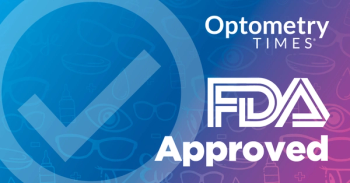
Using medications in pregnant glaucoma patients
Most of the medications, both new and old, we prescribe for glaucoma are quite safe-especially if we educate our patients to occlude their puncta.
Most of the medications, both new and old, we prescribe for glaucoma are quite safe-especially if we educate our patients to occlude their puncta.
When thinking of the potential for adverse effects, non-selective beta blockers come to mind first for many clinicians because of their well-known propensity to exacerbate the signs and symptoms of pulmonary diseases-such as bronchial asthma and chronic obstructive pulmonary disease.
Prostaglandin analogs also come to mind, with their effects on eyelash length and iris color. The effect of eyelash lengthening led to Allergan’s formulation of bimatoprost (Lumigan) into Latisse that has gained FDA approval.
Previously from Dr. Casella:
All in all, the glaucoma medications we commonly prescribe are typically safe, even for our older patients.
With that being said, I recently had a glaucoma patient of mine become pregnant.
She is a 42-year-old African-American female with a known history of bilateral primary open-angle glaucoma for three years.
Patient history
She first presented as a new patient for an eye examination and new glasses with intraocular pressures (IOPs) in the low 30s in each eye. Her glaucoma was determined to be in its earliest stages-with mild structural changes and no glaucomatous defects on visual field studies.
Her angles showed moderate pigment, and her central corneal thickness values were average in each eye. After a brief discussion weighing her young age with her risk of progression, she agreed to treatment and selected medical therapy over a consult for selective laser trabeculoplasty.
Since then, she has had an excellent response to treatment with a prostaglandin analog in each eye at bedtime. Her IOPs consistently were in the high teens (yielding about a 40 percent drop from her maximum measured IOPs), and she has not shown structural or functional progression, either.
Related:
Pregnant with glaucoma
She returned for a comprehensive examination and fundus photography this past fall with exciting news. She and her husband were expecting their first child.
She was about eight weeks pregnant with no problems. She asked me if her drops would be safe during pregnancy and while nursing.
This was the first time I had dealt with a glaucoma patient becoming pregnant. I explained to her that the drops were pregnancy category C, as defined by the FDA, which is commonly seen as a default category because nothing has been proven to show overt risk, but there is insufficient evidence to prove that there is no harm, either.
As it turns out, brimonidine (Alphagan, Allergan), an alpha-2 agonist is the only commonly prescribed glaucoma drop in the U.S. that is pregnancy category B (meaning it is probably safe).
There is a risk of neonatal central nervous system depression later in the third trimester with use of this class of medication, and it should be discontinued at this time (a carbonic anhydrase inhibitor, which is actually pregnancy category C, would be the better choice).1
Prostaglandin analogs are pregnancy category C, and there is very limited empirical data available in the form of human studies. Prostaglandin analogs carry a known risk for premature labor and miscarriage in animal studies.1
There is debate as to whether or not adequate amounts from topical ophthalmic formulations are absorbed in order for such instances to occur in a human, but caution should be exercised nonetheless.
Related:
Treatment
The American Academy of Pediatrics has certified the use of carbonic anhydrase inhibitors and beta blockers while nursing, and brimonidine is contraindicated during this period due to the risk of neonatal central nervous system depression.1
Pregnancy itself may have a hypotensive effect on IOP with modest reductions possible as the pregnancy progresses.2
When a diagnosis of glaucoma is made, it is the responsibility of the clinician to treat effectively based on current evidence. Given the relatively young age of pregnant patients, treatment should likely not be withheld.
As for my patient, I switched her to an alpha-2 agonist for now and sent a letter to her OB/GYN with the new treatment plan in place. I will likely switch her to a topical carbonic anhydrase inhibitor later in her third trimester and will have a conversation regarding whether or not she will be nursing.
References
1. Sethi HS, Naik M, Gupta VA. Management of glaucoma in pregnancy: risks or choices, a dilemma? Int J Ophthalmol. 2016 Nov 18;9(11):1684-1690.
2. Phillips CI, Gore SM. Ocular hypotensive effect of late pregnancy with and without high blood pressure. Br J Ophthalmol. 1985 Feb;69(2):117-119.
Newsletter
Want more insights like this? Subscribe to Optometry Times and get clinical pearls and practice tips delivered straight to your inbox.


















































.png)


